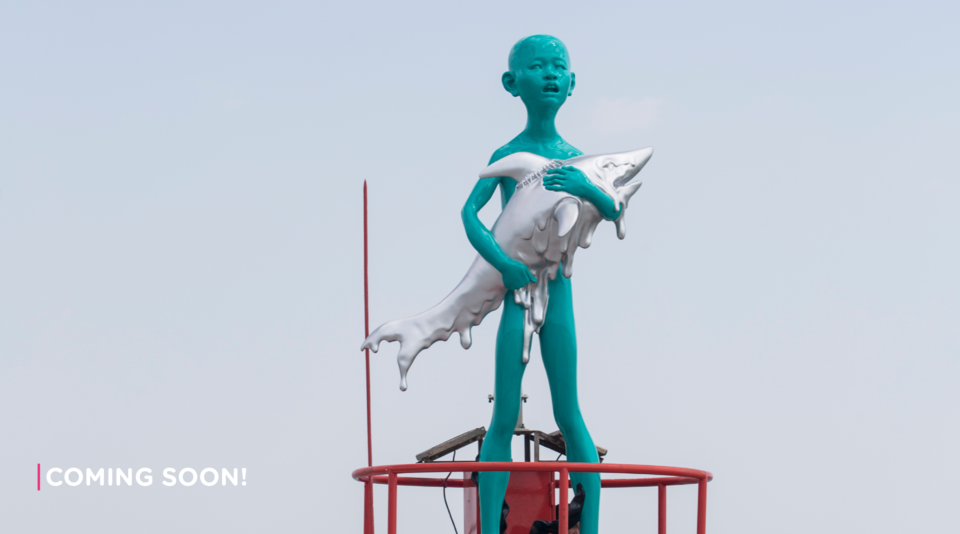A sculpture that was to look out across False Creek to spread its message of environmentalism needs to go someplace else, according to the City of Vancouver’s head of public art.
The Boy Holding A Shark sculpture is a project of the Vancouver Biennale and was created by Chinese artist Chen Wenling. The sculpture stands at 7.8 metres high weighs approximately 1,200 kilograms and features a teal-coloured boy holding a grey, melting shark. The sculpture’s proposed location was on a raised garden area by the Vancouver Seawall to the east of Moberly Road.
Since its announcement, Boy Holding A Shark received a good deal of pushback with a Change.org petition created to oppose the sculpture which garnered over 1,500 signatures. Some signatories of the petition went so far as to call the sculpture an “unsightly imposition” for the surrounding neighbourhood.
Location, location, location
Eric Fredericksen is the head of public art for the City of Vancouver and he explained to Vancouver Is Awesome the sculpture itself had very little to do with the decision.
"It was purely a technical review,” Fredericksen said. "Basically it’s a 180-degree turn that bikes and pedestrians go around… the scale of it is such that there's not really room around it to view it in that same area."
Fredericksen added that due to the sculpture’s proposed location to get a good view or photo of the sculpture you could only do so from the walkway below which would add to what he considers an already congested path.
“Particularly in the COVID-era, particularly as its summer. I know that when I go on a run along there like that's usually where I turn around because it’s just a clog of people," he said.
When asked if the 1,500 signatures on the Change.org petition swayed the city’s decision in any way, Fredericksen said it was hard to say.
Moving forward, Fredericksen says the process has illustrated the need for a more explicit policy around how temporary projects are proposed and adjudicated.
‘Very strong positive support’
Barrie Mowatt, founder, president and curator of the Vancouver Biennale is disappointed by the city’s decision but is happy for the amount of support the sculpture has enjoyed, even from some city councillors.
As for how the city’s decision was made, Mowatt wished the Biennale could have been more included.
"We weren't involved in the final oversight as to the decisions that were made because they're really I think not as indicative of the real situation,” Mowatt said adding the non-profit had collected data on foot and bike traffic along the path and that it is "very under-trafficked” in terms of congestion.
"The decision I think was made more on public response and fear having to engage those handfuls of angry naysayers,” Mowatt continuing to say he believes the naysaying misses the point of the sculpture.
"The artwork really is talking about a critical issue in our times and that's the oceans and the climate issues that nobody can deny anymore," he said.
The Biennale’s website explains the artwork is meant to represent the destruction of oceans and marine life which have suffered from environmental damages, such as global warming and sea pollution due to “humans’ endless thirst for interest and expansion.”
Mowatt says he is now waiting to hear back from the city's engineering department which said they might be able to provide other solutions or locations for the sculpture. Already the Shipyards District in North Vancouver's Lower Lonsdale has voiced interest in housing the sculpture.



